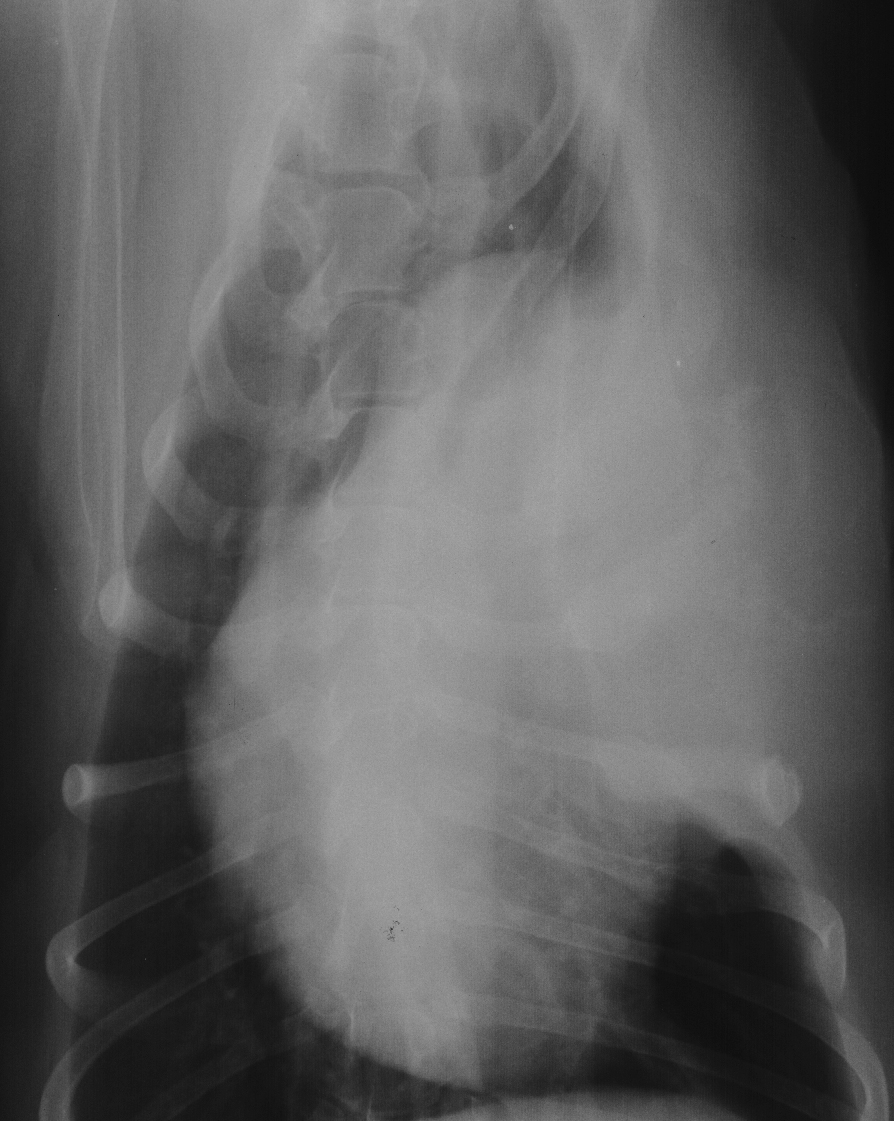rib tumors
BACKGROUND
Rib tumors are uncommon in dogs. The most common reason for presentation is a palpable mass, although occasionally dogs will present with either lameness or respiratory difficulties. The two most common rib tumors are osteosarcoma and chondrosarcoma. Rib osteosarcoma is an aggressive tumor with a high metastatic rate. Up to 45% of dogs with rib osteosarcoma have metastasis at the time of diagnosis.
DIAGNOSIS
Thoracic CT scans are recommended to determine tumor location, the extent of the tumor, and for surgical planning. Biopsy is recommended if the survival outcome will change an owner’s willingness to proceed with treatment as the prognosis for dogs with osteosarcoma is significantly worse than the prognosis of dogs with chondrosarcoma. However, the surgical approach for both tumor types is the same (ie, chest wall resection and reconstruction).
CLINICAL STAGING
Thoracic CT scans are recommended to assess for metastasis to the lungs, and this can be done at the same time as assessment of the primary rib tumor.
TREATMENT
Chest wall resection and reconstruction is recommended for dogs with rib tumors. Six, and may be more, ribs can be resected without adversely affecting ventilatory function. In one study of 39 dogs with rib tumors, the rib tumor was either adhered to or invaded into the lungs in 31% of dogs, the pericardium in 13% of dogs, and the diaphragm in 5% of dogs. In these cases, contiguous organs or structures should be excised en bloc with the rib tumor. The chest wall defect is reconstructed with muscle flaps, prosthetic mesh, or diaphragmatic advancement depending on the location and size of the defect.
Chemotherapy is recommended for dogs with osteosarcoma, but not chondrosarcoma.
PROGNOSIS
Osteosarcoma
The prognosis for dogs with rib osteosarcoma is guarded. Local recurrence is uncommon (12%). Local tumor recurrence is significantly and inversely associated with body weight and 6.7-times more likely following incomplete excision. Distant metastasis is reported in up to 75% of dogs. The median survival time for dogs treated with surgery alone is 90-120 days with 20% of dogs alive at 6 months, but this increases to 240-290 days when surgery is combined with chemotherapy. Increased preoperative ALP, local tumor recurrence, distant metastasis, and the administration of chemotherapy are all prognostic factors for dogs with primary rib osteosarcomas. Tumor-related death is 7.9-times greater for dogs with increased ALP; tumor-related death is 901-times greater for dogs with local tumor recurrence; tumor-related death is 84-times greater for dogs with distant metastatic disease; and tumor-related death is 2.7-times greater for dogs not treated with chemotherapy postoperatively.
Chondrosarcoma
The prognosis for dogs with rib chondrosarcoma is very good. Local recurrence is uncommon (17%), but significantly more likely following incomplete excision. The metastatic rate is low with up to 17% of dogs reported to develop metastatic disease. The median survival time for surgery alone is 1,080 days to > 3,820 days (ie, greater than 50% of dogs are cured with surgery). Poor prognostic factors for dogs with primary rib chondrosarcomas include local tumor recurrence (median survival time 162 days and these dogs were 28-times more likely to have a tumor-related death) and distant metastasis (median survival time 290 days and these dogs were 12.4-times more likely to die as a reuslt of their tumor).
Last updated on 6th March 2017



































